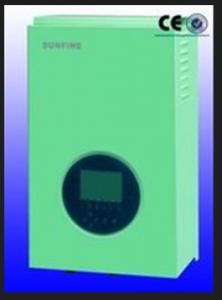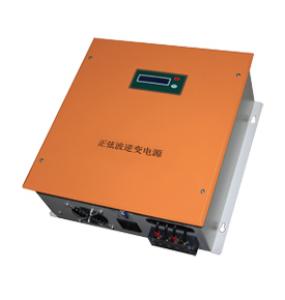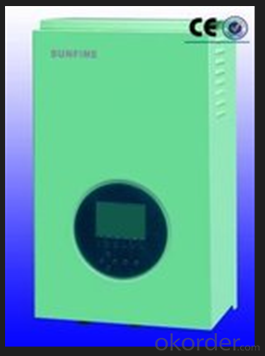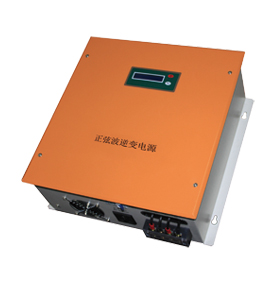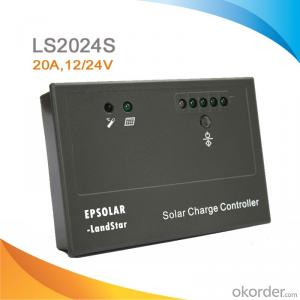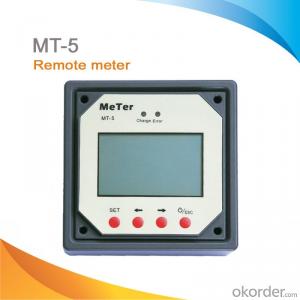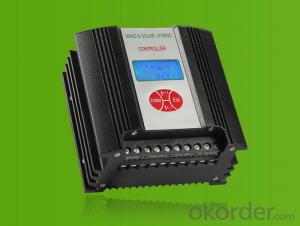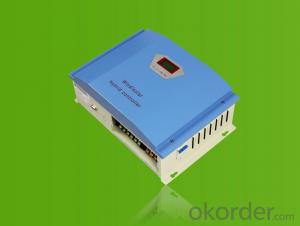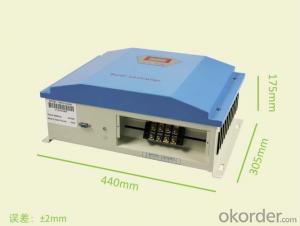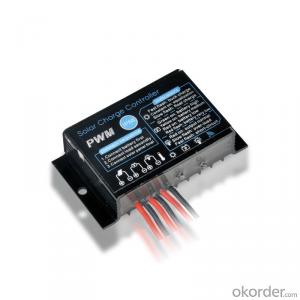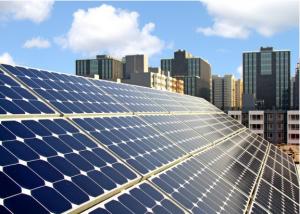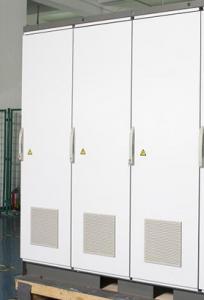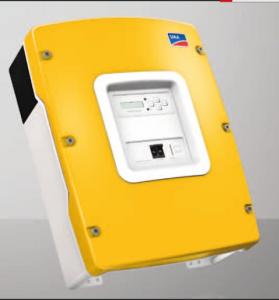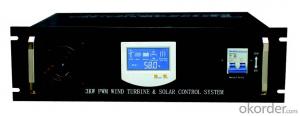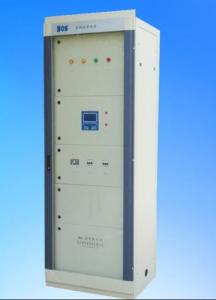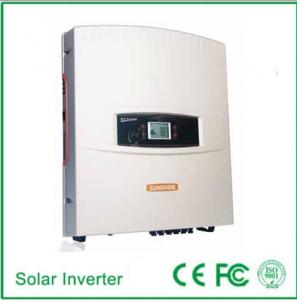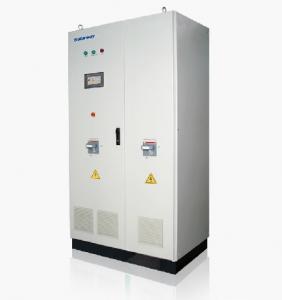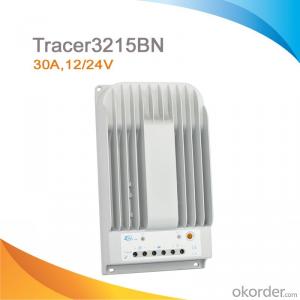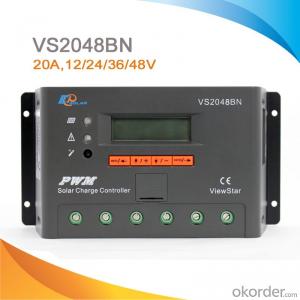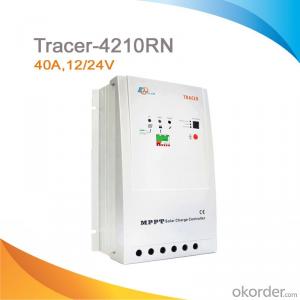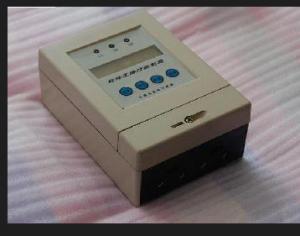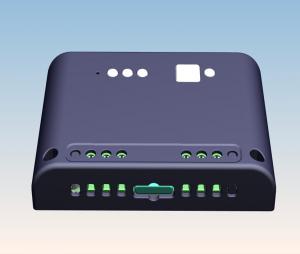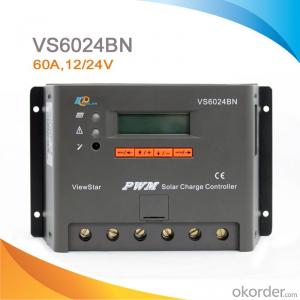Pentair Solar Controllers PV Off-Grid Inverter and Controller Hybrid GN-S0.5K20D
OKorder Service Pledge
OKorder Financial Service
You Might Also Like
Description:
CNBMSOLAR is a world-leading and Vertical integrated manufacturer of high-performance with Silicon,
Wafer, Cells, Modules, which convert sunlight into electricity for residential, commercial, and utility-scale
power generation.
The capacity of CNBMSOLAR is reach to 1GW, and make sure each year our shipment capacity is more
Than 700-800MWs, at the same time, we have set up the largest solar power station with our partner
in Ukraine.
CNBM is a Quality + Service oriented company with“Excellence at Each Step” approach, composed of
the finest components from TUV and IEC-certified partners around the world, CNBM modules consistently
undergo a variety of trials at the company’s Test & Development Centre, ensuring peak performance
capabilities. The company is committed to develop and provide the world with clean and renewable energy
to ease the energy shortages as well as human kind’s impact on the environment.
Data:
Model | GNS-0.5K20D | |
Rated Capacity(KVA) | 0.5 | |
DC Input | Rated Voltage(VDC) | 48 |
Low Voltage(VDC) | 43.2 | |
Low Voltage Resume (VDC) | 52.8 | |
Load Overvoltage(VDC) | 60 | |
Overvoltage Resume(VDC) | 58 | |
PV Input | Rated Current on charging(A) | 20 |
Charge Loop | 1 | |
Overcharge protection(VDC) | 57.6 | |
Overcharge Resumption(VDC) | 56.8 | |
Anti lightning | varistor lighting | |
Grid input | No grid transfer function | |
Rated capacity | Output Waveform | sinewave |
Overload ability | 120% 1min | |
Output voltage(VAC) | 120±3% | |
Output frequency(Hz) | 50±0.04 | |
THD | ≤3℅(THD) | |
Dynamic Response(0~100%) | 5% | |
Efficiency | ≥85% | |
Continous running time | Continuous operation | |
Display | LCD/LED/Meter | |
Protection | Overcharge, overdischarge, overload, short circuit, reverse polarity, internal overheated protections,etc | |
Protection class | IP20 | |
Environment | Noisy | ≤50(dB/m) |
Operating temperature range | -10~+50(℃) | |
Storage temperature range | -25~+55(℃) | |
Operating humidity | 0~95%(non-condensing) | |
Max.altitude(above sea level) | ≤5000(m) | |
Product Dimension (mm) | 400*330*160 | |
Weight(kg) | 21 | |
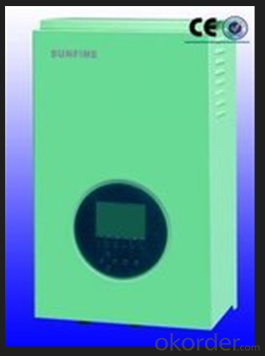
FAQ:Pls introduce more about CNBM
CNBM Group is short for China National Building Materials Group Corporation, which is established in 1984 with approval from the State Council
CNBM Group is the largest comprehensive building materials industry group in China
The Group has a total asset of over RMB 360 billion, more than 180,000 employees and 17 subsidiaries
- Q: What are the advantages of using a solar controller?
- The advantages of using a solar controller include maximizing the efficiency of solar panels by regulating the flow of energy, preventing overcharging of batteries, extending battery life, and providing protection against voltage fluctuations or surges. Additionally, solar controllers can offer monitoring capabilities, allowing users to track energy production and consumption, and some advanced models even enable remote control and programming. Overall, solar controllers play a crucial role in optimizing the performance and lifespan of solar power systems.
- Q: What is the purpose of the battery voltage regulation feature on a solar controller?
- The purpose of the battery voltage regulation feature on a solar controller is to ensure that the batteries connected to the solar system are charged and maintained at an optimal voltage level. Solar panels generate electricity from the sun, which is typically converted into DC (direct current) electricity. This DC electricity is then stored in batteries for later use, especially during periods of low sunlight or at night when the solar panels are not generating power. However, it is important to regulate the voltage of the batteries to prevent overcharging and undercharging, which can significantly shorten their lifespan and reduce their overall efficiency. The battery voltage regulation feature monitors the voltage level of the batteries and adjusts the charging process accordingly. When the batteries reach their maximum charge level, the solar controller will stop or reduce the charging current to prevent overcharging. Similarly, if the battery voltage drops below a certain threshold, the solar controller will increase the charging current to recharge the batteries and prevent undercharging. By maintaining the batteries at an optimal voltage level, the battery voltage regulation feature helps prolong their lifespan, improve their performance, and ensure a reliable power supply from the solar system. It also helps to protect the overall integrity of the solar system by preventing potential damage to the batteries or other connected components due to improper charging.
- Q: What is the role of a solar controller in preventing damage to the solar panels from environmental pollutants?
- The role of a solar controller in preventing damage to solar panels from environmental pollutants is to regulate the charging and discharging of the batteries connected to the panels. By monitoring the battery voltage, the solar controller ensures that the panels do not overcharge or over-discharge, which can lead to detrimental effects such as reduced panel lifespan and decreased efficiency. Additionally, some advanced solar controllers also feature protection mechanisms like short circuit protection and reverse polarity protection that safeguard the panels from potential damage caused by environmental pollutants or other external factors.
- Q: Can a solar controller be used for off-grid cabins or RVs?
- Yes, a solar controller can be used for off-grid cabins or RVs. A solar controller is an essential component of a solar power system, regulating the flow of electricity from the solar panels to the battery bank. It ensures that the batteries are charged efficiently and protects them from overcharging or damage. Whether it's an off-grid cabin or an RV, a solar controller helps optimize the use of solar energy and ensures a reliable and sustainable power supply.
- Q: What is the input voltage range of a solar controller?
- The input voltage range of a solar controller typically depends on the specific model and design, but it is commonly between 12V and 48V.
- Q: What is the cost of a solar controller?
- The cost of a solar controller can vary depending on several factors such as brand, capacity, features, and quality. On average, a basic solar controller can range from $20 to $50, while more advanced models with additional functionalities can cost anywhere from $50 to $200 or more.
- Q: What is the standby power consumption of a solar controller?
- The standby power consumption of a solar controller is typically very low, ranging from a few milliwatts to a few watts. This low power consumption enables the solar controller to operate efficiently and effectively without drawing excessive energy from the solar panel system.
- Q: How do I integrate a solar controller with an existing solar panel system?
- To integrate a solar controller with an existing solar panel system, you will need to follow a few steps: 1. Determine the compatibility: Firstly, ensure that the solar controller you have is compatible with your existing solar panel system. Check the specifications and requirements of both the solar controller and the solar panels to ensure they can work together. 2. Disconnect the existing connections: Before connecting the solar controller, you need to disconnect the existing connections from the solar panels. This involves turning off the solar panel system and disconnecting any wires or cables attached to the panels. 3. Install the solar controller: Once the existing connections are disconnected, you can proceed to install the solar controller. The installation process may vary depending on the specific model, so refer to the manufacturer's instructions for guidance. Generally, you will need to mount the solar controller in a suitable location near the solar panels and connect the appropriate wires. 4. Connect the solar panels to the controller: After installing the solar controller, reconnect the solar panels to it. This typically involves connecting the positive and negative wires from the solar panels to the corresponding terminals on the solar controller. Ensure that the connections are secure and properly tightened. 5. Reconnect the system: Once the solar panels are connected to the solar controller, you can now reconnect the rest of the system. This includes connecting the wires or cables that were previously disconnected. 6. Test and monitor: After completing the integration, turn on the solar panel system and monitor the performance. Check if the solar controller is functioning properly and regulating the charge from the solar panels effectively. Make any necessary adjustments or settings according to the manufacturer's instructions. It is important to note that if you are unsure or uncomfortable with any of the steps involved, it is recommended to seek professional assistance from a qualified electrician or solar technician. They can help ensure a safe and proper integration of the solar controller with your existing solar panel system.
- Q: Can a solar controller be used with solar-powered street lights?
- Yes, a solar controller can be used with solar-powered street lights. A solar controller is an essential component that helps regulate and control the charging and discharging of batteries in solar systems. In the case of solar-powered street lights, the solar controller helps optimize the charging from the solar panels and ensures the batteries are not overcharged or discharged excessively. It also provides other functionalities like dusk-to-dawn operation, dimming, and monitoring, making it compatible and necessary for the efficient operation of solar-powered street lights.
- Q: How does a solar controller handle the synchronization of loads?
- A solar controller handles the synchronization of loads by regulating the flow of electricity from the solar panels to the connected loads. It ensures that the power generated by the solar panels is distributed efficiently and evenly among the loads, preventing overloading or underutilization. The controller continuously monitors the voltage and current of the solar panels and adjusts the output accordingly to match the requirements of the loads. This synchronization process helps optimize the performance of the solar system and ensures the smooth operation of the connected devices.
Send your message to us
Pentair Solar Controllers PV Off-Grid Inverter and Controller Hybrid GN-S0.5K20D
OKorder Service Pledge
OKorder Financial Service
Similar products
Hot products
Hot Searches
Related keywords
